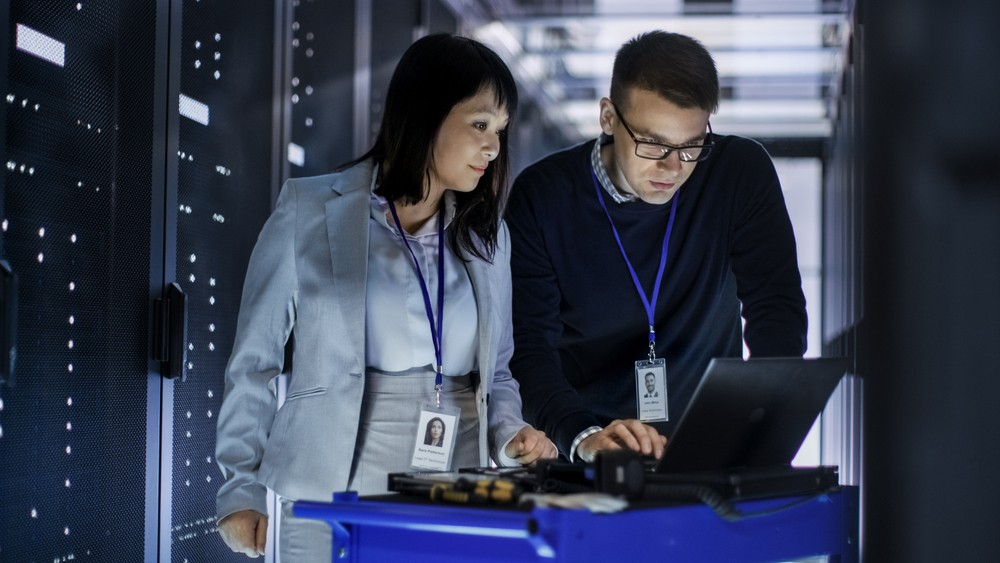According to Salesforce, 81% of IT decision-makers report that data silos are the biggest barrier preventing their organizations from meeting digital transformation goals. Data centers, the backbone of our digital world, are no strangers to this challenge either. These facilities face mounting pressure to improve efficiency, manage growing demands, and achieve sustainability targets. Yet, many remain stuck in reactive modes, hindered by poor data quality and siloed processes, addressing issues only as they arise rather than proactively identifying and resolving them.
This slow and fragmented approach is no longer sustainable in today's fast-paced environment. Modern data centers must be agile and capable of making informed decisions to meet the growing demands of AI. Enter digital twins. Digital twins are virtual replicas of the physical facility, serving as the connective tissue for varied and siloed data. By consolidating diverse data points into a unified, actionable model, digital twins empower data center operators to act quickly and decisively via predictive insights.
Turning Silos into Answers
Think of a digital twin like a kaleidoscope. Data, when viewed individually in its respective silos, is often flat and uninspiring. There is insufficient information to see the full picture or make decisions confidently. However, when data is layered into a single cohesive view – via application programming interfaces (APIs) and routine file transfers – it reveals depth, dynamic interplay, and the visibility necessary to illuminate the path forward. Digital twins enable data center operators to see beyond the constraints of their silos, empowering them to mitigate risks, address inefficiencies, and plan proactively.
Many data center operators – including hyperscalers – still rely heavily on spreadsheets, primarily because spreadsheet data is more flexibly structured, simpler to use, and cheaper than using a data center infrastructure management (DCIM) tool. However, the downsides, such as inconsistently formatted data entry, overly complex macros, and lack of interoperability and automation, are becoming harder to ignore. In other cases, outdated tools and incomplete datasets leave teams struggling with missing information at critical moments. For instance, discrepancies in power usage records between planned and actual can create confusion, drive inefficiencies, and even lead to operational risks.
What’s more, siloed toolsets and spreadsheet data offer no automatable mechanisms to spot mismatches or gaps, which rear their heads at the most inconvenient times. For example, a system might show that a cabinet is energized, but there’s no record of how it is connected to power, raising questions about whether it’s safe to add more devices. In another instance, an alarm might go off for a cabinet that is supposed to be empty and not drawing any power, leaving teams unsure if the issue is a faulty sensor or a mislabelled cabinet.
Digital twin technology helps solve these problems by providing visibility and confidence that can only come from layering an organization’s toolsets, workflows, and data into a unified model.
Digital Twins Change the Paradigm
Digital twins not only highlight data gaps and discrepancies but also give operators the power to resolve them. This process ensures that problems can be addressed proactively rather than reacted to after they have already driven inefficiencies.
Moreover, digital twins excel in contextualizing data within the broader operational landscape of a data center. Integrating data streams from power, cooling, IT, and other systems creates a new, holistic data stream that uncovers insights that would otherwise remain hidden when viewed in isolation. This is especially true when managing airflow, which is invisible by nature yet is revealed by digital twins through computational fluid dynamics (CFD) simulation. These insights are further enhanced through visualization in a 3D model, offering an intuitive and familiar perspective that goes beyond traditional timeline charts, enabling more strategic decision-making.
Ready to Embrace the Change?
For data centers ready to benefit from digital twins, the journey starts with enhancing data collection and collaboration. Instead of requiring teams to abandon familiar workflows or tools, digital twins seamlessly integrate with existing systems, even leveraging legacy spreadsheets to minimize disruption. As facilities experience the benefits of better insights and reduced manual work, transitioning to a unified data environment becomes a natural progression.
With AI, edge computing, and high-density workloads driving demand, data centers need more than incremental improvements – they need a fundamental shift in how they operate. Digital twins provide this by offering a holistic view of the entire ecosystem, turning “boring” data into actionable insights that deliver real value. Armed with digital twins and improved data quality, data centers can break out of reactive cycles, unlock new efficiencies, and establish a future-ready foundation to tackle tomorrow’s challenges.




